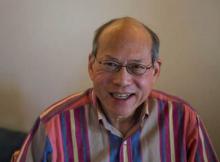All couples in the third arm met with a therapist to watch “Two for the Road,” a 1967 romantic comedy about the joys and strains of young love, infidelity, and professional pressures across 10 years of a marriage. They were then led by the therapist in a guided discussion. They went home with a list of 47 movies with intimate relationships as a major plot focus, and were asked to watch 1 a week for the next month, followed by a guided discussion for about 45 minutes. For couples interested in trying the film discussions for themselves, the website ofRonald D. Rogge, Ph.D., offers interactive tools to help with the process, including lists of movies and the discussion questions used.
What happened?
The couples invested in their relationship and began to examine their own behavior. Watching a movie together and having a discussion was therapeutic but did not pathologize their relationship, nor did the partners seek to blame each other. The therapist-led marriage intervention programs available usually require trained therapists, and are expensive and intensive. Can couples work on their relationships on their own? The assumption has been that you need to teach couples skills to manage conflict; this might not be true. This study indicates that relationship storytelling can be a step that couples and families can take, on their own.
Movies also can be used in teaching
Family medicine teachers Catherine M. Weber, Ph.D., and Dr. Hugh J. Silk (Fam Med. 2007;39[5]:317-9) developed a movie-watching curriculum to deepen trainees’ understanding of patients and their families. The curriculum was divided into sections. The family and illness section focused on how family members find a will to help their loved ones, even in the midst of a lack of resources or medical futility. They watched “Lorenzo’s Oil” (1992), “The Straight Story” (2006), and “A River Runs Through It” (1992). The family and loss section examined how families become dysfunctional in the presence of the loss of a loved one and what it takes to heal. They watched “Ordinary People” (1980), “The Barbarian Invasions” (2003), and “The Trip to Bountiful” (1985). The section on family and caregiving identifies the strain of illness on family members who provide direct care to ill patients. They watched “Marvin’s Room” (1996) and “Iris” (2001). The section on the family and substance abuse identified how family members got caught in roles and included “When a Man Loves a Woman” (1994) and “The Days of Wine and Roses” (1962). The section on the extended family and illness illustrated how illness brings people together. They watched “Flawless” (1999), “My House in Umbria” (2003), “Beaches” (1988), and “The Barbarian Invasions (2003).
A more specific look at family systems is provided by the curriculum of Dr. Robin O. Winter and Bruce A. Birnberg (Fam Med. 2005;37[2]:96-8) in a series called “Family Systems at the Movies.” Their overarching objective was to promote an understanding of multigenerational issues, the impact of family secrets and family dynamics, the effect of stress on family life, and the attributes of a functional family. Concepts such as homeostasis, boundaries, coalitions, and scapegoating were then applied to the clinical setting. Selected scenes were chosen from three works: “The Joy Luck Club” (1993), “Shine” (1996), and a TV series called “Secrets and Lies” (2015-).
Regarding early marriage, Dr. Salman Ahktar and Dr. Zoe Billinkoff (Am J Psychoanal. 2011; 71[2]:110-20) used movies to discuss how identity, the development of mutuality, and the synthesis of affection and sensuality develop in early marriage. Their goal was to help therapists develop greater empathy with newly married individuals. They focused on three movies: “Barefoot in the Park” (1967), “Raising Arizona” (1987), and “The Quiet Man” (1952). Regarding divorce, Toni Mandelbaum(Am J Psychoanal. 2011;71[2]:121-33) used movies to illustrate the interplay between dependence and independence using “Eat Pray Love” (2010) and “Kramer vs. Kramer” (1979).
Many psychiatry residency programs have journal clubs and film clubs that use movies as a jumping-off point to deepen trainees’ understanding of psychopathology. Implementing these curricula is a simple way of beginning family training in residency, especially when the use of family videos are curtailed by strict confidentiality rules.
Future ‘family and film’ events
Dr. Francis G. Lu, (www.francislumd.com), a regular presenter at many conferences, including the American Psychiatric Association annual meetings, uses film to promote a deeper understanding of the world around us and within us. In 2007, he and Brother David Steindl-Rast, Ph.D., a Benedictine monk, co-led a 7-day seminar entitled, “Families in Film, Now and Forever” at Esalen Institute (go to www.gratefulness.org, then search “films”). From July 10-17, 2016, Dr. Lu and Dr. Steindl-Rast will co-lead “The Resilience of the Family in Film: Epics of Love, Loss, and Recovery” and from July 17-24, 2016, “Through Compassion to Serenity in the Mindful Viewing of Japanese and Western Films.” Registration opens in January 2016 at www.esalen.org. If you have ever attended one of Dr. Lu’s seminars at the APA, then you know you will be in for a rich experience at Esalen.



